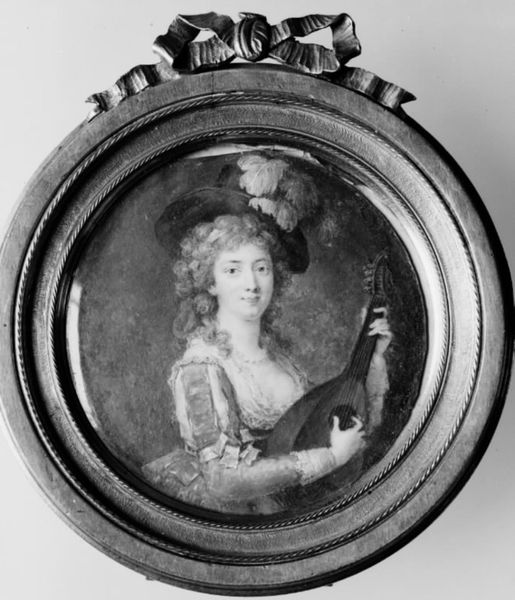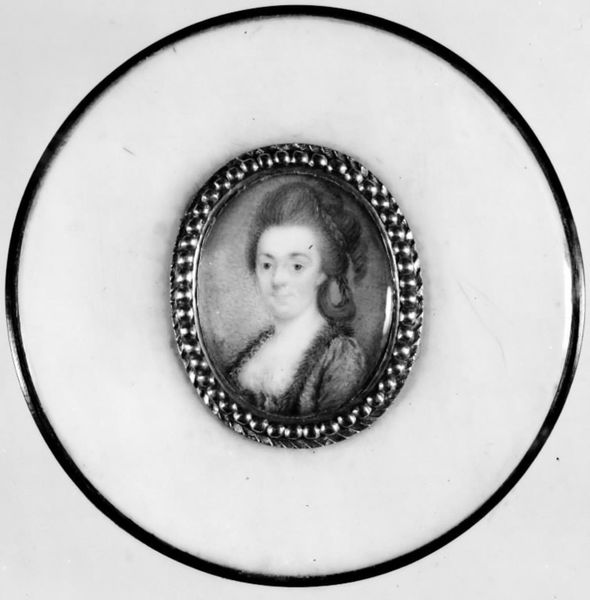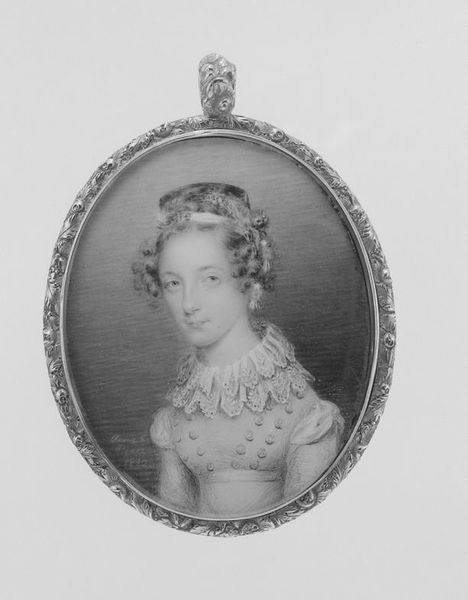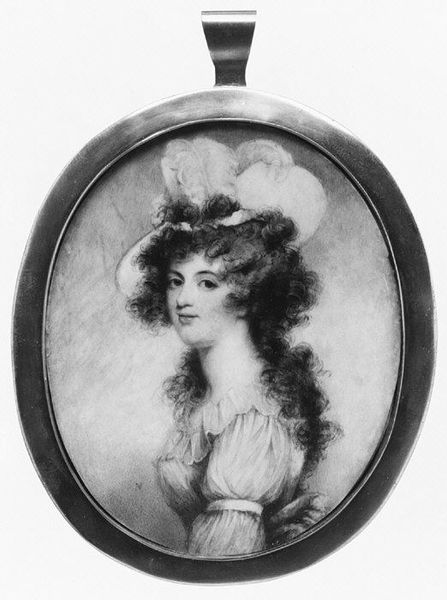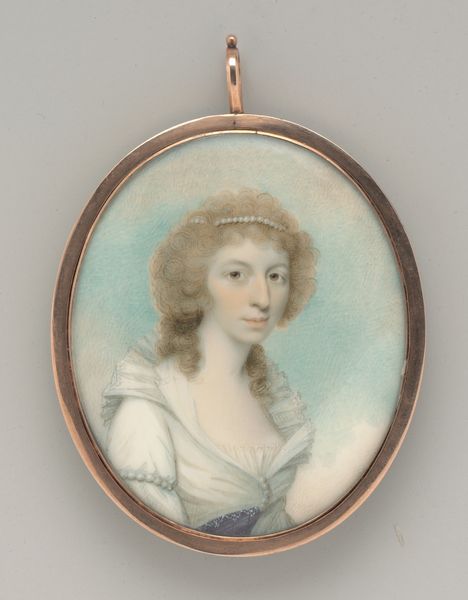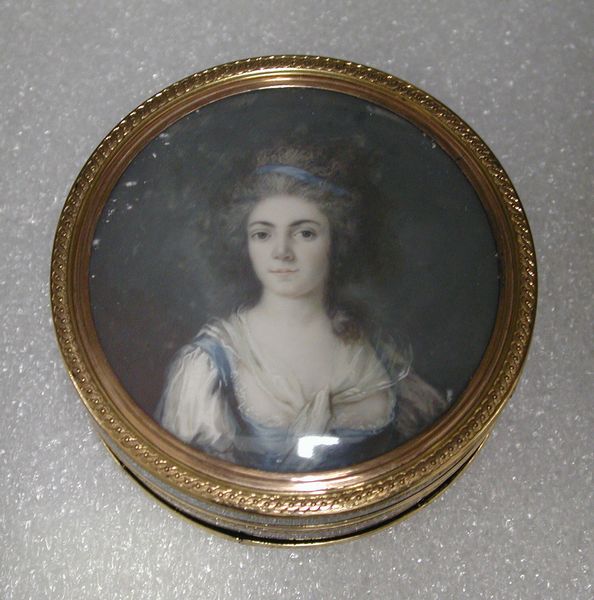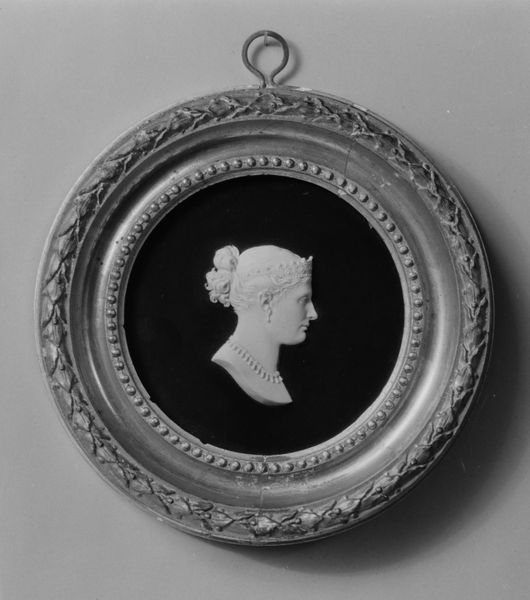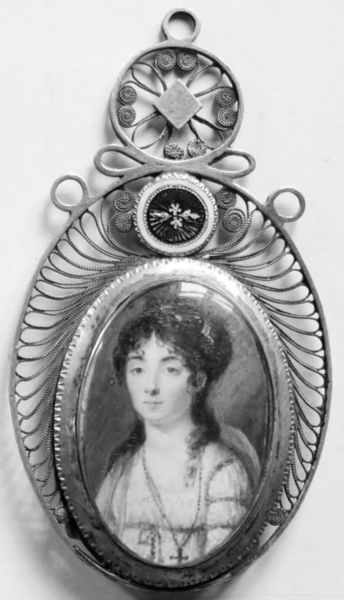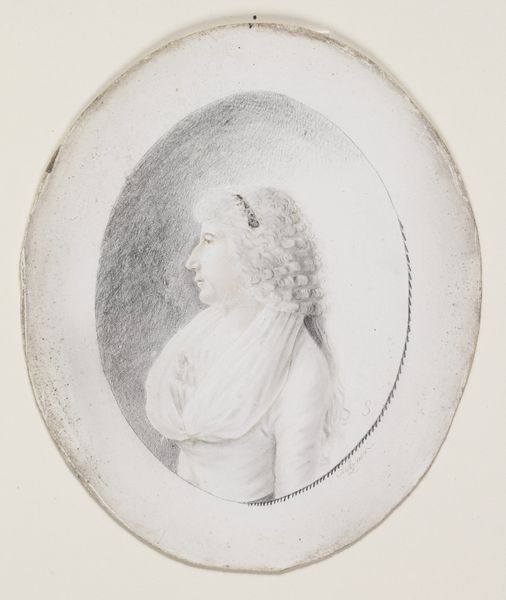
Box with portrait of a woman 1775 - 1781
0:00
0:00
Dimensions: box: 1 1/16 × 3 in. (2.7 × 7.6 cm); miniature (oval): 2 1/4 × 2 1/8 in. (5.7 × 5.4 cm)
Copyright: Public Domain
Curator: Here we have Jean-Baptiste Jacques Augustin's "Box with portrait of a woman," created between 1775 and 1781. Editor: The immediate feeling I get is of delicate restraint—it is a small box featuring the portrait of a poised, yet rather contained woman, framed within these concentric circles. The decorative flourishes lend to a feel of almost precious containment. Curator: Right, and it’s a striking example of late 18th-century craftsmanship. It represents the Rococo era’s obsession with detail and personal adornment, right down to the miniature portrait integrated into an everyday object. Think about the layers of labor involved: the fashioning of the box itself, likely by skilled metalworkers, alongside the creation of this delicate portrait. Editor: It definitely speaks volumes about identity during that era. A box is more than just storage, it becomes an intimate vessel holding aspects of the sitter’s world – maybe letters, jewelry, secrets – reflecting the constructed nature of identity, and femininity, itself. We should remember that portraiture in general was almost exclusively reserved for the wealthy, reflecting broader issues of gendered power dynamics within that specific class structure. Curator: The materials themselves are interesting. Consider the cost and procurement of materials in that period. Where were the graphite, paint, and metals sourced? Who was involved in their extraction and distribution? What status do those details afford to both patron and maker? These details inform its original valuation as well as our current appreciation for the craftsmanship. Editor: That raises interesting points regarding access. While we appreciate the artistry, it’s crucial to also interrogate how it reflects broader issues of privilege. This wasn't an accessible object for all; it speaks to a very particular socioeconomic status, a deliberate choice, solidifying identities by those depicted, to be preserved as well as fetishized through time. Curator: Agreed. Looking at this, one begins to consider production processes and the circulation of luxury goods within these aristocratic circles, illuminating the larger economic framework underpinning its creation and consumption. Editor: Exactly, we must never cease to challenge this dynamic in its original historical and contemporary theoretical interpretations. Thank you, these additional details provide an extraordinary amount of texture that allows for meaningful, continued observation and cultural commentary. Curator: Thank you as well, for prompting consideration of the socio-economic conditions and how the artwork contributes to narratives of class and power!
Comments
No comments
Be the first to comment and join the conversation on the ultimate creative platform.
